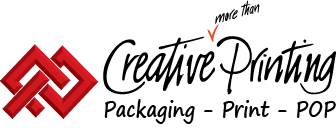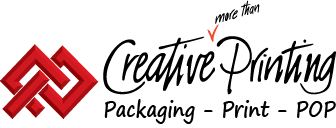
Styles
Standard ReverseTuck (SRT)
Standard Reverse Tuck folding carton (SRT) The standard reverse tuck has the manufacturer’s joint in the right rear corner. The top closure tucks from the rear to the front, and the bottom closure tucks from the front to the rear.
Standard Straight Tuck (SST)
The standard straight tuck folding carton is particularly well suited for products requiring a large window in the front display panel. Typically, both closures will tuck from the front to the rear, which avoids a raw edge showing at either end of the primary display panel. It also prevents possible interference between the tuck and the window film material, which could occur with a reverse tuck. This style carton is equally well suited for hand erecting and closing, or machine forming and closing.
Full Overlap Seal End (FOSE)
The full overlap seal end folding carton (FOSE) is typically erected, filled and closed on automatic horizontal or vertical packaging equipment. The normal closing sequence is: Dust flaps in first, inner closure panels (off the rear panel) down next, and outer closure panels (off the front panel) down last (Figure 2). The sift resistant characteristics of the FOSE may be enhanced by making minor changes to the design and folding sequence of the end closure and flaps.
1-2-3 Bottom (a.k.a.) Houghland or Snap Lock Bottom
This style folding carton was originally identified by the inventor’s name (Houghland) is today for frequently referred to as the 1-2-3 closure. It is used almost exclusively as a bottom closure, generally in combination with a tuck top closure. This is a hand erected and closed style. In addition to use in the variation shown below, the 1-2-3 closure carton is frequently used as the bottom closure for a shallow depth tube style counter display carton.
Himes Lock, Automatic Bottom (a.k.a) Crash Lock, Economy or Popcorn Bottom
The Himes or crash lock automatic bottom folding carton is preglued in the converter’s plant. It is hand erected and typically used where fast set up is critical, but production volume does not justify an investment in automatic packaging equipment.
Four Corner Beers Tray (a.k.a.) Biers Tray
The Beers tray is a folding carton glued by the converter and shipped flat to the customer. It is typically set up and loaded by hand. Figures 1 and 3 show the conventional Beers. Figure 2 shows the “stay-up” or “full drag” version. Combination of a side panel diagonal angle of less than 45° (43-1/2° typically) and a non-tapered glue flap causes the glue flap to “drag” across the bottom panel. Natural friction causes the carton to resist collapsing once erected.
Four Corner (Point) Beers with Tuck Top Closure (a.k.a.) Biers
This style folding carton is typically set up, loaded and closed by hand. It is suitable for a broad range of relatively light products.
Six Corner Tray
The six corner folding carton Beers tray is glued by the converter and shipped flat to the customer. It is typically setup and loaded by hand. A variation on this basic style carton includes conventional Beers corners at the front of the base tray and front cover.
.
Custom Styles
Many other styles to choose.
.
Custom Shapes
Blister cards
Clamshell insert cards
Sleeves and bands
Portfolios
Display cards
Materials
White
/
White
Solid Bleached Sulfate (SBS)
SBS generally performs well for embossing, hot foil stamping, creasing, and gluing. It cuts cleanly and has sufficient internal and surface strength properties to accommodate high-speed printing with tacky oil-based lithographic inks. SBS is not known for tear strength, but generally has good stiffness and compression strength. Other properties like being hygienic and pure with no smell and taste, make it usable for flavor sensitive products like cigarettes, Pharmaceutical, chocolate, and cosmetics. SBS is often higher priced as compared with other paperboard substrates.
White
/
White
White
/
Brown
Solid Unbleached Sulfate (SUS)
Clay natural kraft (CNK) or solid unbleached sulfate (SUS) is a superior strength and tear resistance paperboard grade that is produced from a furnish containing at least 80 percent virgin unbleached, natural wood pulp. It is formed in two or three layers and is mostly comprised of longer softwood (pine) fibers which contribute to strength. A thin concentration of hardwood fibers is added to the top surface for somewhat enhanced smoothness. It is white on the top side due to its extremely opaque, titanium-based coating to improve its printing surface. Its natural resistance to moisture make it an ideal candidate for refrigerated and frozen applications.
White
/
Brown
White
/
Brown
Coated Recycled board (CRB, CCNB, CCWB, Duplex, LWC…)
CRB is generally made from a blend of recycled, newsprint, old corrugated containers and mixed secondary paper. Its fibers are often 100 percent recycled, with 35 percent or more of the content considered “post-consumer.” It is comprised of as many as eight or more layers of material, with the top ply made of bleached or semi-bleached fibers. A variety of machines is used in its manufacture, including fourdrinier, cylinder and hybrid forming systems. CRB is the most common substrate for low-cost folding cartons when recycled content is preferred or required. It is for multi-purpose packaging where tear strength and premium print quality aren’t paramount. It often has a one direction stiffness advantage.
White
/
Brown
Brown
/
Brown
Uncoated recycled board (URB, Bending Chip, Chipboard, CRB)
Uncoated recycled board (URB, Uncoated Recycled Paperboard (URB) is made from 100% recycled fibres. Commonly known as “Chipboard,”. Chipboard has a smooth, uncoated surface on both sides and the color varies depending on the recycled fibers used.
Brown
/
Brown
White
/
White
Folding Box Board (FBB, TMP)
Folding box board also referred as FBB, CTMP or TMP comprises middle layers of mechanical pulp sandwiched between outer layers of chemical pulp. The top layer of chemical pulp is bleached and pigment coated. The back of the paperboard is cream (manila) in colour. This is because the back layer of bleached or unbleached chemical pulp is translucent, allowing the colour of the middle layers to influence the appearance. Being virgin fibre paperboard with consistent purity for product safety, the combination of inner layers of mechanical pulp with outer layers of chemical pulp creates a strong and stiff sheet, making it a low density material with high stiffness. The fully coated grades give great printing and visual impact.
White
/
White
Brown
/
Brown
UNK Uncoated natural kraft (KraftPak)
Formed on a fourdrinier-type paperboard machine in two layers, where the top layer houses a concentration of hardwood fiber for somewhat enhanced smoothness. It is a strong, lightweight, uncoated and unbleached kraft paperboard grade, designed to provide maximum strength, cleanliness and performance while using the least amount of fiber. The quality of graphic reproduction doesn’t match that of coated materials; however, designers are sometimes creative with the earth-tone appearance.
Brown
/
Brown

